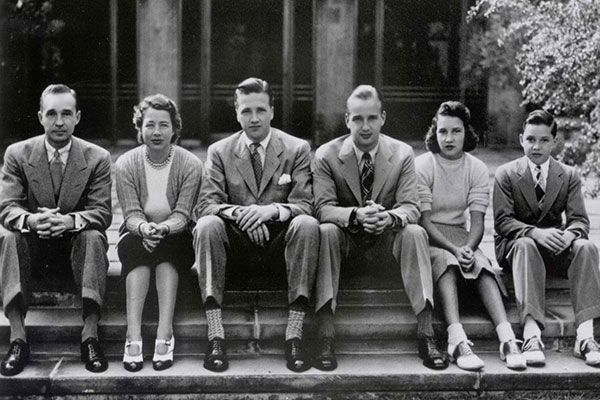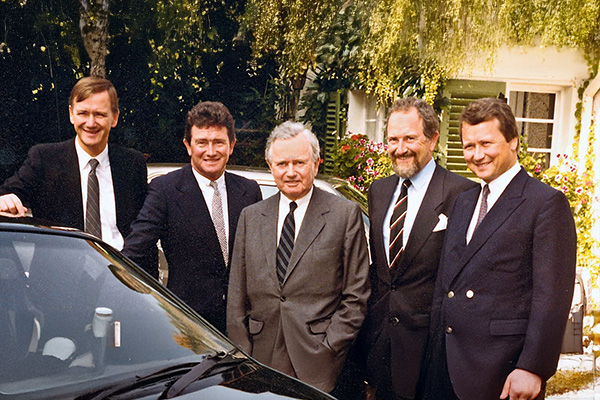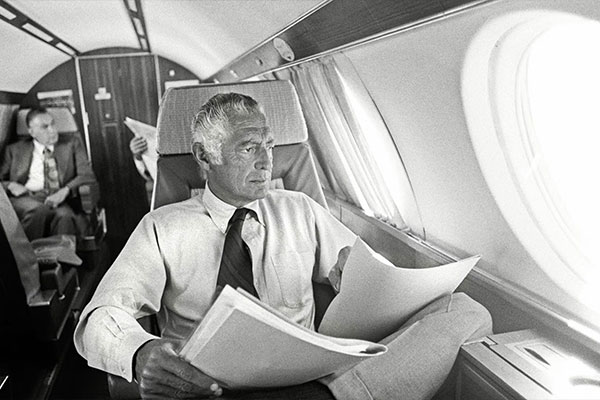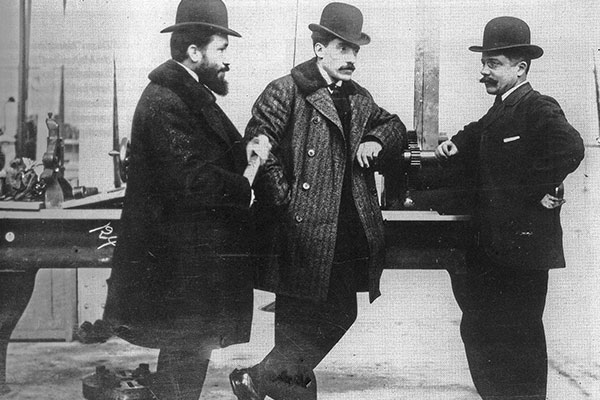Family Matters: The Dynasties that Drove the Automotive World
The car world might be driven by pistons and petrol, but behind many of the most recognisable marques are families whose names have become just as legendary as the machines they built. Some were visionaries, others pragmatists, and a few were just plain stubborn – but together they shaped an industry. Here’s a look at some of the great automotive dynasties who left tyre marks on history.
The Ford Family: From Tin Lizzie to Tech Giants

The Ford family: Edsel, Eleanor, Henry II, Benson, Josephine and William Clay. Source: Ford
You can’t talk dynasties without tipping your hat to the Fords. Henry Ford wasn’t the first to build a car, but he was the first to make one ordinary people could afford. The Model T wasn’t just transport, it was liberation on four very skinny tyres. And while Henry was a larger-than-life figure – sometimes brilliant, sometimes infuriating – his descendants carried the torch. The Ford family still holds sway in the company today, with great-grandson Bill Ford Jr. serving as executive chairman. Few families can claim such unbroken influence over a global brand for more than a century.
The Porsche–Piëch Clan: Engineering Royalty

Wolfgang Porsche (right) celebrates the 75th birthday of his father Ferry (center) at the Porsche villa in Stuttgart in 1984, with brothers Hans-Peter (left), Gerhard (second from left), and Ferdinand Alexander. Source: Porsche
If the Fords brought cars to the masses, the Porsches refined them into art. Ferdinand Porsche’s fingerprints are all over 20th-century motoring, from the Volkswagen Beetle to the first Porsche 356. But it was his descendants who cemented the dynasty. Ferry Porsche established Porsche as a marque in its own right, while Ferdinand Piëch (his grandson) became one of the most powerful figures in the Volkswagen Group, overseeing everything from Audi’s quattro revolution to Bugatti’s record-breaking Veyron. Engineering brilliance clearly ran in the bloodline, along with a healthy dose of boardroom drama.
The Agnellis: Fiat, Fashion, and a Nation on Wheels

Giovanni Agnelli. Source: Fiat
In Italy, cars aren’t just transport; they’re culture. And no family embodies that quite like the Agnellis, the dynasty behind Fiat. Giovanni Agnelli founded the company in 1899, and by the mid-20th century Fiat was Italy’s largest manufacturer, putting the nation on wheels with the humble 500. But the Agnellis weren’t just about cars. They were style icons, politicians, even part-time kingmakers. Gianni Agnelli, the most famous of them all, was as renowned for his tailored suits as for his business acumen. Under his leadership, Fiat expanded globally, taking stakes in Ferrari, Maserati, Alfa Romeo, and Lancia. In Italy, the Agnellis were practically royalty.
The Toyota Toyodas: From Looms to Legends

Kiichiro Toyoda Source: Wikimedia Commons
Japan’s automotive powerhouse started with something altogether different: weaving looms. Sakichi Toyoda invented an automatic loom in the late 19th century, but it was his son Kiichiro who turned the family business toward cars in the 1930s. The name was tweaked from “Toyoda” to “Toyota” (the latter considered luckier in Japanese numerology), and a dynasty was born. The Toyoda family remained closely tied to the company, with Akio Toyoda – grandson of Kiichiro – serving as president until 2023. Under his leadership, Toyota doubled down on hybrid technology and performance cars alike, proving that family heritage can still drive innovation in the modern era.
The Renault Brothers: A Trio that Changed France

Three brothers Louis, Marcel and Fernand Renault. Source Wikimedia Commons
Before Renault was a household name, it was three brothers tinkering in a Parisian workshop. Louis, Marcel, and Fernand Renault built their first car in 1898, and within a few years were racing – and winning – across Europe. Marcel tragically died in a race in 1903, but Louis carried the company forward, blending performance with practicality. Renault went on to dominate both everyday motoring and motorsport, producing everything from family saloons to Formula One power units. Today, Renault might feel more corporate than familial, but its origins lie firmly in the hands of three ambitious brothers.
The Dodge Brothers: Grit, Grease, and Detroit Muscle

John and Horace Dodge. Source Detroit Public Library
Not every dynasty is polished. John and Horace Dodge started out supplying parts to other manufacturers in Detroit, including a certain Henry Ford. But they soon struck out on their own, launching Dodge Brothers cars in 1914. Rugged, reliable, and built for the rough American roads, Dodge became synonymous with muscle long before the word was coined. The brothers were tough characters, fond of fast living and hard drinking, and their untimely deaths in 1920 cut the family’s direct link with the brand. Still, the Dodge name remains on muscle cars and trucks today, proof that dynasties can live on even without heirs at the helm.
From Families to Foundations
Not every great automotive family kept its grip on the wheel. Some dynasties faded, others sold out, and a few imploded under the weight of their own ambitions. Yet their legacies endure, not just in logos or factories, but in the way we think about cars. The Fords made motoring democratic. The Porsches and Piëchs showed us engineering could be exhilarating. The Agnellis brought style and swagger. The Toyodas proved that reinvention could drive an empire. And the Dodges reminded everyone that a little grit and guts goes a long way.
Automotive dynasties are as much about people as they are about machines. They’re families who turned dreams into engines, ideas into icons. And while the industry today is full of mergers, takeovers, and faceless conglomerates, it’s worth remembering that many of the cars we love began not in boardrooms, but around family tables, sketched on scraps of paper, and driven forward by names we’ll never forget.

COMMENT